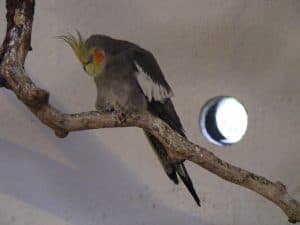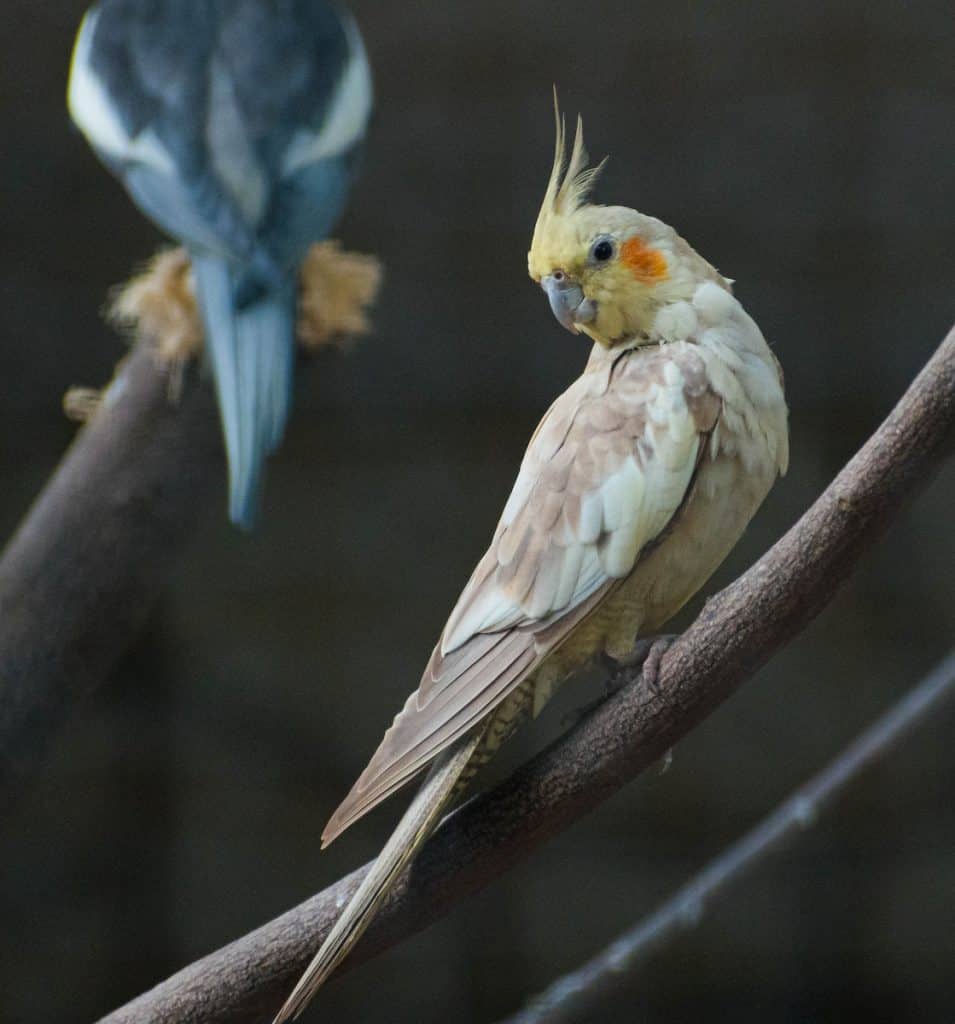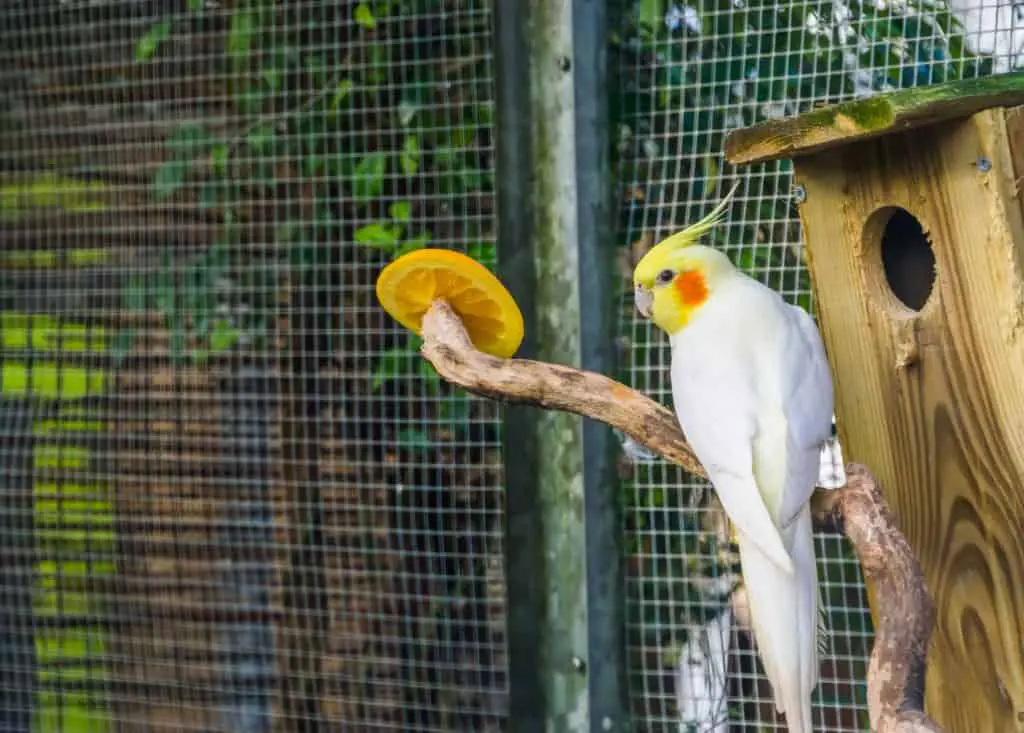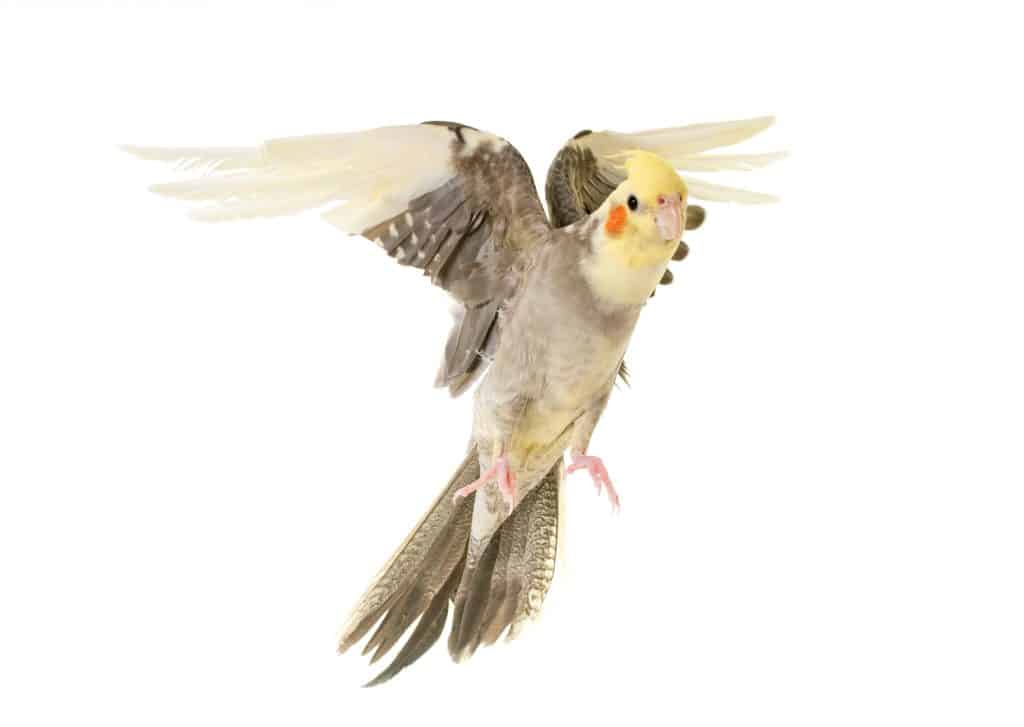Cockatiels are intelligent, social, and energetic birds that make great companions for bird enthusiasts. Just like any other pet, they require regular exercise to maintain their overall health and wellbeing. Exercise plays a crucial part in keeping your cockatiel happy, healthy, and mentally stimulated. In this blog post, we will explore the importance of cockatiel exercise, the different types of activities you can provide for your pet birds, and tips on how to create a safe and fun environment that encourages movement and play.
Why Cockatiels Need Exercise

Providing your cockatiel with adequate exercise is essential for several reasons:
1. Maintain a healthy weight: Exercise helps your bird burn off excess energy and calories, preventing obesity and related health issues.
2. Strengthen muscles and improve coordination: Regular physical activity helps to maintain balance, strengthen muscles, and improve coordination, which is especially important for birds who spend most of their time in a bird’s cage.
3. Promote mental wellbeing and prevent boredom: Exercise provides mental stimulation and helps prevent boredom, a common cause of stress and behavioral issues in pet birds.
4. Enhance bonding with their owner: Engaging in play and exercise with your cockatiel is a great way to strengthen your bond and improve your bird’s overall happiness.
Types of Exercise for Cockatiels
1. Flying:
In the wild, parrots like cockatiels spend a significant amount of time flying in search of food, mates, and safe places to rest. Allowing your cockatiel to fly is an essential part of providing them with more exercise.
a. Free-flight in a safe environment: Ensure your bird is securely perched before opening the cage door, and let your bird fly around a room with closed windows and doors. Remove any toxic plants or household items that may be dangerous to your bird, and cover mirrors and windows to prevent collisions.
b. Interactive games: Encourage your bird to fly by playing games like fetch or chase. Gently toss a small toy or object and encourage your bird to retrieve it or chase after it.
2. Climbing:

Cockatiels enjoy climbing and use their beak, feet, and wings to navigate their environment. Providing opportunities for climbing is an excellent way to give your bird more exercise.
a. Vertical space in the cage: Ensure your bird’s cage has ample vertical space with perches, ladders, and rope perches at various heights. Arrange these items in a way that encourages movement and exploration.
b. Cage play areas: Create play areas outside of the cage with play stands, cargo nets, and other climbing toys. Make sure they are securely attached and provide a firm grip for your bird’s toes to prevent accidents.
3. Playing and foraging:
Play is a crucial part of your bird’s overall wellbeing, as it offers mental stimulation and encourages natural behaviors.
a. Climbing and swinging toys: Provide toys that encourage movement, such as swings, ladders, and rings. Watch as your bird hangs upside down, stretches, and uses its beak to manipulate the toys.
b. Foraging activities: In the wild, parrots spend a significant amount of time foraging for food. Encourage this behavior by hiding food and treats in foraging toys or inside other toys in the cage.
- STURDY METAL CONSTRUCTION: Constructed of quality wrought steel coated with rust-and water-resistant hammered paint, this divided breeder cage boasts excellent strength and durability, which is ready for your birds to use for years to come.
- FLEXIBLE BREEDING CAGE: The dividing grate helps divide this wide bird cage into two individual breeding/living spaces for housing two or more birds. Each bird cage system contains 2 perches, 2 feeders, a lockable door, a side nesting door, a pull-out tray and a grate. Or you can remove the middle grate to make it a bigger cage.
- STACKABLE FOR MORE VERSATILITY: Got many birds but had limited space to keep them? This stackable breeding cage is your best solution. You can pile up two or three cages together to efficiently leverage the vertical space in the room and save space.
- PET-PARENT FRIENDLY: Four perches and four plastic cups are included for your convenience. The cage has 4 feeding doors on the face for easy seed and water refilling.
- EASY CLEANING: With the waterproof finished cage and the bottom slide-out tray, cleaning for this cage would be a breeze for pet parents. The pull-out grate at the bottom prevents birds from walking in its excrement.
Safety Considerations for Cockatiel Exercise
Providing a safe environment for your bird to exercise is essential. Keep these safety considerations in mind:
1. Bird-safe environment: Ensure the area where your bird will be exercising is free of hazards, such as toxic plants, open windows, and household items that your bird could chew or ingest.
2. Supervision: Always supervise your bird during exercise time to prevent accidents and ensure their safety.
3. Regular toy and equipment inspections: Frequently inspect all toys, perches, and play areas for wear and tear, replacing anything that may pose a risk to your bird.
Tips for Encouraging Exercise

1. Establish a daily routine: Consistency is key when it comes to exercise. Set aside a specific time each day for your bird’s exercise and playtime.
2. Positive reinforcement and treats: Use treats and positive reinforcement to encourage your bird to participate in activities and explore new toys.
3. Rotate toys and activities: Keep your bird engaged and interested by regularly rotating toys and introducing new activities.
How Exercise Benefits Your Cockatiel’s Overall Health

Regular exercise provides numerous benefits for your cockatiel:
1. Improved cardiovascular health: Exercise helps maintain a healthy heart and respiratory system, which is essential for your bird’s overall health.
2. Prevention of obesity-related health issues: A good diet and regular exercise can help prevent obesity, which can lead to various health problems in birds.
3. Mental stimulation and stress reduction: Providing opportunities for play and exercise helps to keep your bird mentally stimulated and reduces stress and boredom.
4. Enhanced quality of life: A healthy and active lifestyle contributes to a happier and healthier bird, making them a more enjoyable companion for you.
What to Do if Your Cockatiel isn’t Getting Enough Exercise
If your cockatiel is not getting enough exercise, there are a few things you can do to help get them moving.
For cockatiels that are used to being handled, parrot owners sometimes start parrot training sessions with the parrot on their shoulders.
Make sure your parrot has plenty of room to fly around its cage. If your parrot’s wings are clipped, then they should be fully functional if you pull on a parrot’s wings, it will feel discomfort (but not pain) because they are not meant to fly. However, if you tug on a parrot with its wings clipped, the bird won’t experience any distress since it can’t flail its arms about.
If you are worried that parrots are becoming overweight or obese, then consult an avian vet. They can help determine whether the parrots are overweight and advise parrot owners about parrot diets, exercise, and other factors that contribute to parrots’ weight.
Final Thoughts
Cockatiel exercise is an essential aspect of your bird’s overall health and wellbeing. By providing various opportunities for your bird to fly, climb, and play, you are helping to ensure a happy, healthy, and well-rounded pet. Remember to prioritize safety and always supervise your bird during exercise time. With a little creativity and effort, you can create an engaging and fun environment that will encourage your cockatiel to stay active and healthy.
Other suggested articles:
How the cockatiel got her name?
What Does a Pregnant Cockatiel Look Like?
- How Can Your Other Pets Be Harmful To Your Cockatiel
- How Cockatiels Show Affection
- How Do Children Make Cockatiels As Pets
- How Do Cockatiels See
- How Do Cockatiels Sleep
- How Do Fumes Affect Your Cockatiel
- How Do You Care For Your Cockatiel Everyday
- How Do You Choose A Cage For Your Cockatiel
- How Do You Medicate Cockatiels
- How Do You Provide Your Cockatiel With Water
- How Do You Select Your Cockatiel
- How Do You Tame A Cockatiel
- How Does A Cockatiel Got Her Name
- How Far Can A Cockatiel Fly
- How Far Can A Cockatiel See
- How Fast Can Cockatiels Fly
- How Good Is A Cockatiels Memory
- How Long Can A Cockatiel Go Without Food
- How Long Can Cockatiels Go Without Water
- How Long Do Cockatiels Actually Live For In Captivity
- How Long Do Cockatiels Live In Captivity
- How Long Does It Take For Clipped Wings To Grow Back
- How Long Does It Take For Cockatiel Tail Feathers To Grow Back
- How Long Should A Cockatiel Be Out Of Its Cage
- How Often Do Cockatiels Lay Eggs
- How Often Do Cockatiels Poop
- How Often Should A Cockatiel Go To The Vet
- How Should I Set Up My Cockatiels Cage
- How To Bathe Your Cockatiel
- How To Bird Proof A Room
- How To Bond Two Cockatiels
- How To Bond With A Scared Cockatiel
- How To Build Trust With A New Cockatiel
- How To Calm A Stressed Cockatiel
- How To Care For Your Cockatiels Health
- How To Care For Your Cockatiels Nails
- How To Catch A Cockatiel
- How To Clean Cockatiel Nose
- How To Clip A Cockatiels Nails
- How To Discipline A Cockatiel
- How To Find A Cockatiel That Flew Away
- How To Get A Cockatiel Back Into Its Cage
- How To Get A Cockatiel To Go On Your Hand
- How To Get A Cockatiel To Like You
- How To Get A Cockatiel To Sit On Your Finger
- How To Give Your Cockatiel Exercise
- How To Grow Millet For Cockatiels
- How To Hold A Cockatiel
- How To Introduce A New Cockatiel To Another
- How To Keep A Cockatiel Quiet
- How To Keep A Cockatiel Warm 10 Tips And Tricks
- How To Maintain A Clean Cockatiel Cage
- How To Make Your New Cockatiel Feel At Home
- How To Manage Multiple Cockatiels In One Household
- How To Monitor Your Cockatiels Health
- How To Prepare Your Cockatiel For Travel
- How To Prevent Your Cockatiel From Becoming Stressed
- How To Recognize And Treat Cockatiel Anxiety
- How To Take Care Of An Older Cockatiel
- How To Tame A Cockatiel That Bites
- How To Tame Your Cockatiel
- How To Teach A Cockatiel To Talk
- How To Tell If A Cockatiel Is In Pain
- How To Tell The Age Of A Cockatiel
- How To Toilet Train Your Cockatiel
- How To Train A Cockatiel To Fly To You 8 Steps
- How To Train A Cockatiel To Poop In One Place
- How To Train Naughty Cockatiels
- How To Transition Your Cockatiel To A New Cage
- How To Transport A Cockatiel To The Vet
- How To Trim A Cockatiels Beak
- How To Trim Your Cockatiels Wings




